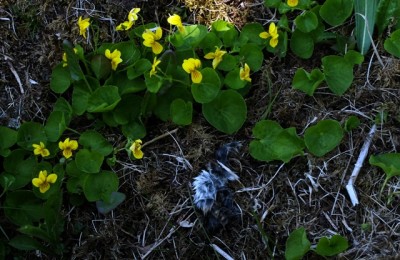They’ve a really bad public image, lemmings. We’re led to believe they’re a weak-willed, lily-livered species, following each other blindly, jumping off cliffs when the going gets tough.
It’s a myth of course, the suicidal tendency. In fact they’re extremely tough. They only move in a great crowd when there are so many of them they have to move elsewhere for food. Otherwise they’re loners, making their own trail and finding their own food in a very harsh environment.
Come the winter they don’t lie down and go to sleep for six months. They’re awake and active, living in underground burrows, seeking out small shoots and seeds buried in the snow.
Wildlife in the sub-arctic all depend on lemmings for their survival. If they don’t eat lemmings themselves, they’ll be eating something that does. Although lemmings are the bottom of the food chain they refuse to be the underdog. They don’t sneak around in a camouflage of neutral grey and beige, making life hard for their predators. Instead they’re an easy target in their shining coat of black, white and brown patches – proud, it seems, to be a lemming.
This year’s been a good year for lemmings so they’ve been quite visible, even to us who aren’t on the look out for them. We see them scurrying ahead of us into a bush root or a small patch of snow.
And when we come to rest somewhere for lunch, and we look down at the tiny dots of flowers down at our feet, we usually find among the pinks and greens a small patch of black, brown and white belonging to an ex-lemming.


